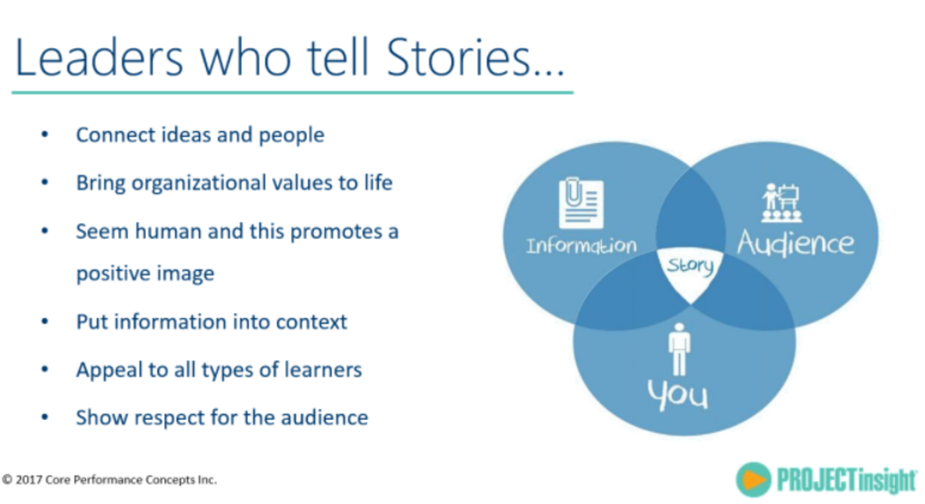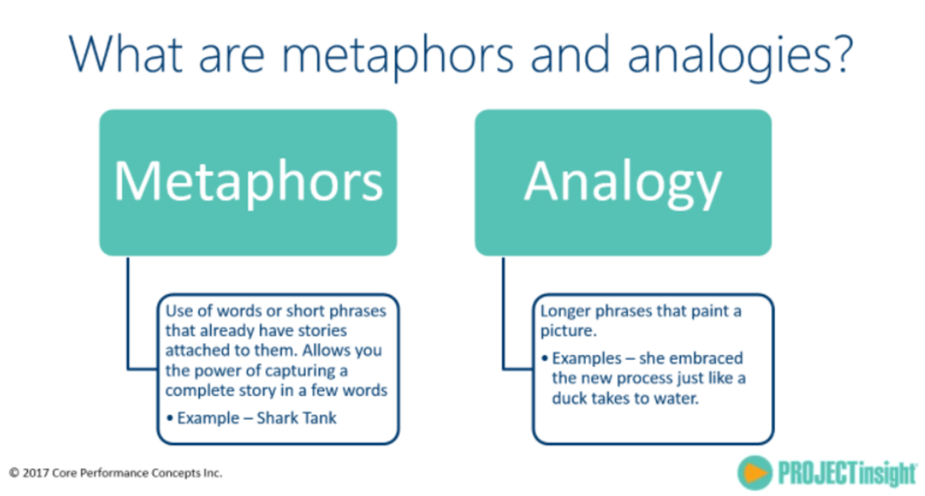Imagine this… your project is completely on time and even on budget! As Project Managers, we are constantly working towards this goal. Day in and day out we work issues, timelines and resources… it’s what we do. Currently, statistics show that less than 40% of projects deliver on time and within budget. Diane Buckley Altwies, CEO of Core Performance Concepts and first time presenter with Project Insight, Jennifer Samuel-Chance, International Speaker and Storytelling Coach, share some knowledge to help us reach this goal in Project Insight’s “Storytelling for Project Managers” webinar.
Jennifer draws on her 17 years of experience as an international speaker and storyteller to discuss how important it is to hone your storytelling skills as PM. Jennifer says “Project Managers should use storytelling when they need to teach, update information and persuade others to adopt a new way and/or change behavior.” Isn’t that what we spend our days doing? Educating and convincing our teams and clients along a path towards a goal? PM’s are natural born leaders and influencers but we can all use extra skills to help us do our best.

Storytelling should be a combination of the information you are relaying, your own personal experiences and reaching your audience. Your objective is to help your audience see the picture you are painting for them. Keep in mind what the listener needs from the story and guide them along to your point using metaphors and analogies.

Grow and develop your own bucket of stories. Think about your day to day life, your encounters with friends, co-workers and clients. Read books, magazines and the internet. These are all sources of stories and give you details for metaphors and analogies. Jennifer recommends keeping a journal or recording yourself with your cell phone during the day to remind yourself of stories as they happen, so that you can review them later and add them to your bucket. Remember, first-hand accounts and facts should be the basis of your stories. Strive for your stories to be true and never harsh.
Diplomacy is key when using metaphors and analogies. For example, on scope changes, Diane cautions us to recognize why the scope is changing. You want the person requesting the change to feel like you are taking their needs and wants into account, not just shutting them down. The goal is to provide a visual way for them to understand your concern. For example, try using something like “I understand we are running behind schedule but eliminating this step is like asking for a peanut butter & jelly sandwich and then removing the jelly at the last minute. When the sandwich is delivered, it isn’t the same. I love the jelly part and don’t want just peanut butter.”
We all reach that point on projects where the scope has crept and crept and you are just trying to get a delivery completed. Next thing you know, another request for a change has come your way. Jennifer reminds us to pause, breathe and smile before responding. Don’t take it personal, use storytelling and help your listener see a picture that will convince them to allow you to control the scope and finish the project. Be sure to take the time to let them speak and to control your response.
Even if your project is doing great and you are running on time and on budget, there will be opportunities each day to use storytelling. As you develop your stories, watch how your influence in your professional and personal life will slowly change and grow.
Questions or comments? Feel free to share them below!
You may also like:
ABOUT THE AUTHOR: Patti is a Project Management Consultant with over 15 years of experience managing complex website projects. She works with clients in many industries including software development, healthcare and professional organizations. Learn more about Patti on LinkedIn.